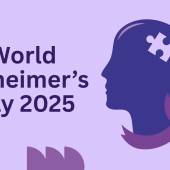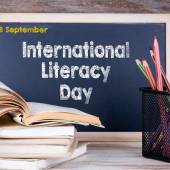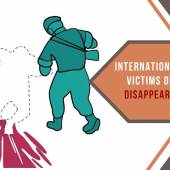International Day for Disaster Risk Reduction

International Day for Disaster Risk Reduction is celebrated on October 13
The day celebrates how people and communities around the world are reducing the damage of disasters by raising awareness about the importance of preparation for risks.
It promotes awareness of disaster risk reduction and recognizes the vulnerability to disasters and the loss of lives, health, economies, and infrastructures.
The day also honors volunteers all over the world who are working to reduce vulnerability to disasters.
This year’s International Day theme will focus on Target G of the Sendai Framework: “Substantially increase the availability of and access to multi-hazard early warning systems and disaster risk information and assessments to people by 2030.”
In March 2022, UN Secretary-General António Guterres announced, “the United Nations will spearhead new action to ensure every person on Earth is protected by early warning systems within five years.”
The main target of the Sendai Framework is to avoid creating new and reduce existing risks.
If it is unavailable, people-centered early warning systems and preparedness can help early action to reduce damage to people, assets, and livelihoods from the risk of all disasters such as man-made, natural, environmental, technological, and biological hazards.
The United Nations Office for Disaster Risk Reduction (UNDRR) calls for greater investment in expanding early warning and early action for all on this International Day for Disaster Risk Reduction.
All disasters are hazards, but all hazards are not disasters.
According to eco-intelligent.com, a hazard is any phenomenon that has the potential to destroy life and property. A hazard becomes a disaster when the potential to cause destruction is fulfilled. When there is harm to the life and property of humans, the hazard is termed a disaster.
There is a saying, “Prevention is better than cure.”
Preparation for emergency response is nearly 20 times higher than for prevention and preparedness, countering sustainability principles.
The COVID-19 pandemic and the escalating climate catastrophe were difficult to reduce death and the number of victims.
Early warning systems are still unavailable to one-third of the world's population, especially in the least developed and small island developing nations.
If we think about ‘leaving no one behind,’ we must create different early warning systems to meet their specific needs.
The Need for Early Warning Systems
When early warnings are issued, the systems must include a plan for vulnerable persons such as the aged and persons with disabilities.
Early warning can reduce the damage and loss of lives. If we can be warned 24 hours ahead, it can reduce damage by 30 per cent. Thus, early warning systems must include several hazards.
The developing countries use US$ 800 million in early warning systems and it helps to avoid losses of $3-16 billion per year.
Least Developed Countries (LDCs) and Small Island Developing States (SIDS) need international support to build and expand their early warning systems.
Climate change is causing more frequent, extreme, and unpredictable climate-related hazards, and it is an urgent need to invest in the early warning system.
Response to catastrophic weather events and other natural and man-made disasters requires international cooperation in the form of Official Development Aid (ODA) for early warning systems and self-capacity building.
Disasters affect severely all in terms of deaths, injured, displaced and homeless persons and loss of economy if we do not have a well-prepared system for disaster risk reduction.
We cannot reduce poverty and hunger if we do not invest in disaster risk reduction.
Background
The International Day for Disaster Risk Reduction was started in 1989 to promote a global culture of risk awareness and disaster reduction at a one-day meeting of the United Nations General Assembly.
In 2009, the United Nations General Assembly officially designated 13 October as the date to commemorate the Day (A/RES/64/200).
How to observe the International Day of Disaster Risk Reduction?
Share on social media
We should share the post on social media to raise awareness that disaster reduction with early warning can reduce loss and damage.
Join the disaster preparedness training
There are special groups who lectured in the preparation for the disaster. By joining the training, we may be aware of the disaster and can prepare well ahead before the disaster comes. We can share the knowledge with our friends and those who are close to us.
Plant a tree
Recently, Catholic Church celebrated the Season of Creation 2022, which started on September 1, the World Day of Prayer for the Care of Creation, and ended on October 4, the feast of St. Francis of Assisi, the patron saint of ecology.
We should plant trees to care for our common home, save the environment, and prevent climate change.
Today, let us celebrate the International Day for Disaster Risk Reduction by planting a tree to take part in the prevention of climate-changed disasters.
Radio Veritas Asia (RVA), a media platform of the Catholic Church, aims to share Christ. RVA started in 1969 as a continental Catholic radio station to serve Asian countries in their respective local language, thus earning the tag “the Voice of Asian Christianity.” Responding to the emerging context, RVA embraced media platforms to connect with the global Asian audience via its 21 language websites and various social media platforms.














